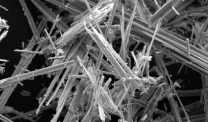Early Detection Tests for Mesothelioma Are in Development
Research & Clinical TrialsWritten by Travis Rodgers | Edited By Amy Edel

Scientists in Australia are developing early detection tests for mesothelioma. The Asbestos and Dust Diseases Research Institute’s new test could potentially save lives. According to ADDRI’s academic and research director Dr. Anthony Linton, the tests will be similar to PCR tests already in use to detect COVID-19.
These new tests can find small amounts of DNA that cause disease. The PCR method, used since the 1980s, allows DNA samples to be studied in a higher level of detail. PCR is the tech behind the beginning of the 1990 Human Genome Project to identify and map human DNA.
“We have identified a number of candidate genetic markers that offer hope that they may be able to be used to diagnose patients with mesothelioma, ” Linton said. Earlier mesothelioma diagnosis significantly increases treatment options and improves prognosis for patients.
“The continued death toll from asbestos-related diseases such as mesothelioma is still much too high,” Linton observed. “Unfortunately, for the majority of patients with mesothelioma, we don’t identify their disease until it is already very well established.”
Targeting High-Risk Individuals
ADDRI scientific researcher Ben Johnson believes early detection tests may eventually be used to target certain people who are at high-risk of developing mesothelioma. “The hope is that we can apply this technique in the clinical setting to diagnose asbestos-exposed individuals at an earlier stage,” Johnson said.
“We could then establish pop-up clinics in areas that are known to have a history of asbestos use so that we could target individuals that are likely to be at high risk of developing mesothelioma,” Johnson said. “Patient survival outcomes are likely to be significantly improved if treatments can be administered earlier.”
Some of the highest risk occupations for asbestos exposure include construction workers, firefighters, factory workers, shipyard workers and members of the military. Linton hopes the early detection mesothelioma tests will be available before the end of this decade.
Australia’s History With Asbestos
According to SBS News, Australia has one of the world’s highest measured rates of mesothelioma with more than 700 people dying from the disease every year. Globally Australia saw the highest per capita rate of asbestos use between the 1950s and the 1970s. Many deaths can be linked to the former asbestos mining town of Wittenoom in Western Australia.
Wittenoom was covered in asbestos dust, threatening thousands of lives. No residents remain and all remaining structures in the town were demolished in May 2023 . In total around 20,000 people had once lived and worked in Wittenoom. Experts believe about 25% will ultimately be diagnosed with mesothelioma or another asbestos-related disease.
“When my husband Brian was diagnosed with pleural mesothelioma there were a lot of questions I needed answers to,” Lorraine Kember told The Mesothelioma Center at Asbestos.com. “How could the asbestos fibers he had inhaled whilst living in the asbestos mining town of Wittenoom for a few short months as a child not have an impact on his health until 45 years after he left the town?”
Lorraine’s husband Brian died of pleural mesothelioma. He had only spent a few months in Wittenoom when he was 7 years old and 45 years later he was diagnosed with mesothelioma.
“The only thing available to Brian was pain medication and palliative chemotherapy treatments to ease his symptoms,” Lorraine shared. “Would his fate have been different if he had been aware of the long latency period between exposure to asbestos and had the opportunity to take a test that could determine if asbestos had compromised his body despite his appearance of good health?”
“Sadly, I can never know the answer to this question,” she noted. “For anyone who is suffering from mesothelioma and those who have lost loved ones due to it, the proposed PCR test is an exciting prospect that offers a rare ray of hope.”






